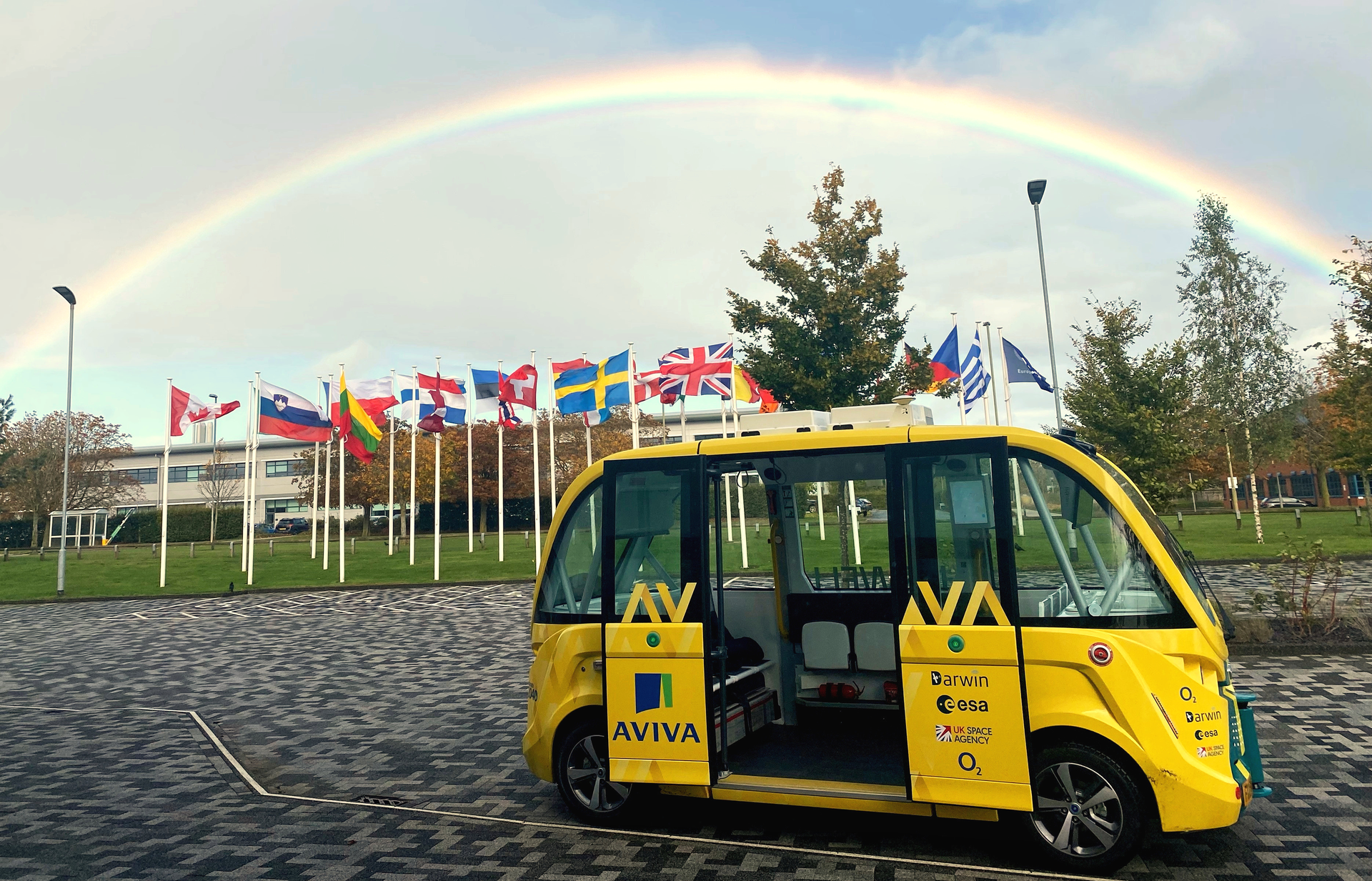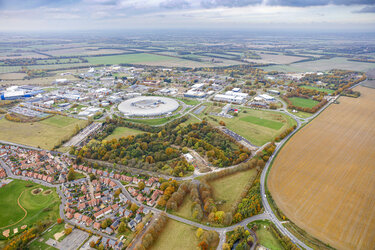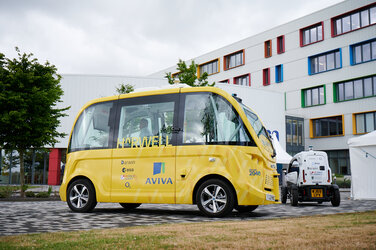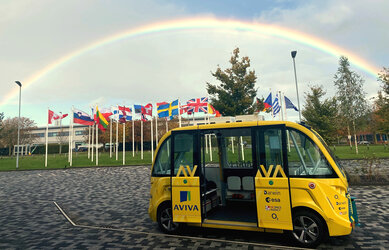Space-enabled connectivity steers self-driving cars
In one of the longest-running trials of a self-driving vehicle, collecting data over 13 000 km of autonomous travel, Darwin Innovation Group has been testing a novel driverless shuttle bus at Harwell Science and Innovation Campus, in Oxford, UK; home to ESA’s European Centre for Space Applications and Telecommunications (ECSAT). The technology is funded under the ESA 5G/6G Programme with the support of the UK Space Agency.
Self-driving vehicles may get around on their own, but they can only do so by being connected. Instead of relying on a driver’s eyes and instincts, self-driving vehicles know where they are, where they’re going and what is in their way based on data from cameras and sensors, and a constant connection to communication networks.
The Darwin Autonomous Shuttle has been travelling around Harwell Science and Innovation Campus since November 2021, taking more than 1400 staff, contractors and visitors where they need to be through a combination of 4G, 5G and satellite connectivity. This allows the shuttle bus to remain constantly connected and tracked as it follows a four-kilometre route around Harwell Campus, operating six hours every working day and navigating roundabouts, zebra crossings, junctions, public roads and changing traffic. As the shuttle uses Darwin’s technology to connect seamlessly to the strongest network at any moment, it maintains a constant connection even if one network is unavailable.
The Harwell shuttle uses lidar, cameras and ultrasound to map its local environment and react to any changes, such as from traffic or pedestrians. To support its positioning on the road, it is also fitted with a navigation antenna.
Due to UK regulatory requirements, a safety operator must currently monitor the shuttle at all times. However, there is confidence that the shuttle will be able to run alone when regulations change. This would open up opportunities for on-demand shuttle services to isolated or rural areas which receive less regular public transportation, even enabling passengers to select specific destinations off-route.
Data collected from this trial have already contributed to the first ‘smart insurance’ product being created for autonomous vehicles – a crucial step in allowing such vehicles on the road, for the safety of other vehicles and drivers alike.
In December 2023, Darwin purchased a second shuttle, enabling the company to test longer service hours and the potential to provide entertainment services for passengers, such as video streaming and playing online video games.
Driverless vehicles are now becoming a reality on our roads, and offer a real opportunity for economic and social development. Testing has been underway for a number of years to ensure the technology is robust, reliable and safe.
ESA’s 5G/6G programme line has been a part of the technology’s evolution through co-funding the novel shuttle at Harwell Science and Innovation Campus, helping to understand the technical requirements and capabilities of self-driving vehicles.
Future applications of the technology are not limited to shuttles or campuses. It is well-positioned to also support operations at industrial sites, ports and airports. Further development of the technology is also planned to enhance cyber-security and allow remote operation of the vehicle, increasing safety, reliability and ultimately confidence, and bringing it closer to becoming a day-to-day transport option.
Antonio Franchi, Head of ESA’s 5G/6G programme line, said: “Working with the Darwin team to develop this technology is important to bringing the benefits of connected autonomous vehicles to our daily lives. They offer a vital tool in unlocking economic opportunities across Europe, as well as reducing the environmental impact of transportation services.”






